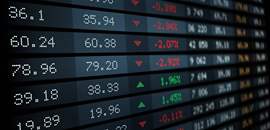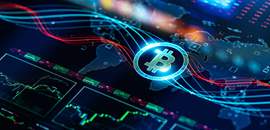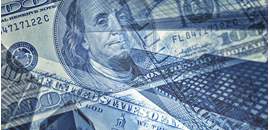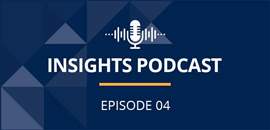After the U.S. dollar plummeted by 12% against the euro in 2020, it has been on a roll: It has appreciated by about 20% since the start of 2021 to reach parity versus the euro for the first time since the early 2000s (see chart below). This outcome was at odds with most forecasts of dollar weakness, and a Bloomberg commentary mentions it has caused some observers to question whether the dollar’s appreciation has been too rapid and could cause policymakers to take steps to halt its rise.

Looking Back at Currency Volatility
This issue is reasonable considering what happened during the period of high currency volatility in the 1980s. At that time, large swings in the dollar caused officials on both sides of the Atlantic and in Japan to coordinate monetary and exchange rate policies to stabilize the currency markets.
The initial attempt was the Plaza Accord in September 1985. At that time, the Reagan administration became concerned that the dollar’s surge in the first half of the decade was undermining U.S. price competitiveness. This occurred against a backdrop of then record U.S. trade and current account deficits that gave rise to protectionist pressures. G-5 policymakers (U.S., France, Germany, U.K., and Japan) sought to weaken the dollar without undermining investor confidence by having their central banks coordinate interventions in currency markets while they lowered interest rates.
That said, investors today should not hold their breath waiting for policymakers to pursue policies to drive the dollar lower. Treasury Secretary Janet Yellen, for example, has stated that U.S. exchange rate policy is directed at allowing market forces to determine the value of the dollar. And she has not wavered from that stance since then. At a press conference in late July, Yellen indicated that the recent surge in the dollar reflected the tightening of U.S. monetary policy that has attracted capital inflows into the United States.
Dollar's Strength Should Continue
My take is this stance is sensible. The dollar’s strength mainly reflects the outperformance of the U.S. economy relative to the European Union (E.U.) economy in the last two years, which has enabled the Federal Reserve to pursue more aggressive monetary tightening than the European Central Bank (ECB).
Looking ahead, there is a risk that Europe will slip into recession before the U.S. does. The primary reason is Europe is heavily dependent on natural gas supplied by Russia, and it faces the threat that Russia will cut off natural gas supplies as winter approaches. This already is contributing to upward price pressures on natural gas in Europe and high inflation.
By comparison, the U.S. has become the world’s largest exporter of liquid natural gas, and it is self-sufficient in energy. Also, while the U.S. economy has slowed this year, the labor market is still tight.
Fed Still Sees Inflation as the Primary Risk
By comparison, the ECB has been more cautious in raising rates because economic conditions in Europe are substantially weaker. Accordingly, the interest-rate differential favoring the dollar versus the euro is likely to widen further in the balance of this year and into next year. This is the key factor that is likely to support the dollar in the short-to-medium term.
Over the longer term, other factors will play a role. One is the size of the U.S. current account deficit and Germany’s current account surplus. In this regard, the U.S. external deficit has climbed from 2% of GDP to 4% in the past two years. The latter is roughly in line with the deficits during the 1980s but below the record of 6% during the onset of the 2008 Global Financial Crisis.
With respect to Germany, its current account surplus has been reduced in half, from 8% to 4%, as it faces rising energy import bills and softer exports to China. Accordingly, it is unlikely to cause policymakers to try to halt the euro’s slide.
Another important consideration is international price competitiveness. The Bank for International Settlement (BIS) measure of the dollar’s real effective exchange rate that adjusts the trade-weighted dollar for inflation rate differentials shows that it is approaching its highest level in the past two decades. This suggests that further dollar appreciation could impact the ability of U.S. businesses to compete abroad down the road.
However, my own observations based on a recent trip in Italy and Greece suggest businesses that cater to international clientele such as hotels have not lowered prices in U.S. dollar terms. This may lessen the impact of exchange rate changes. By comparison, goods and services that are provided locally appear cheap in dollar terms.
Weighing these considerations, my assessment is that euro-dollar parity is not an aberration. The likelihood is the dollar will push through parity as interest differentials continue to widen. At some point, it could approach the 0.9 euro per dollar level in the early 2000s. That level, however, may not be sustainable if the U.S. economy were to slip into recession next year and the Fed stops raising interest rates.
A version of this article was posted to Forbes.com on September 1, 2022.
Past performance is not indicative of future results. This publication contains the current opinions of Fort Washington Investment Advisors, Inc. Such opinions are subject to change without notice. This publication has been distributed for informational purposes only and should not be considered as investment advice or a recommendation of any particular security, strategy, or investment product. Information and statistics contained herein have been obtained from sources believed to be reliable and are accurate to the best of our knowledge. No part of this publication may be reproduced in any form, or referred to in any other publication, without express written permission of Fort Washington Investment Advisors, Inc.






















